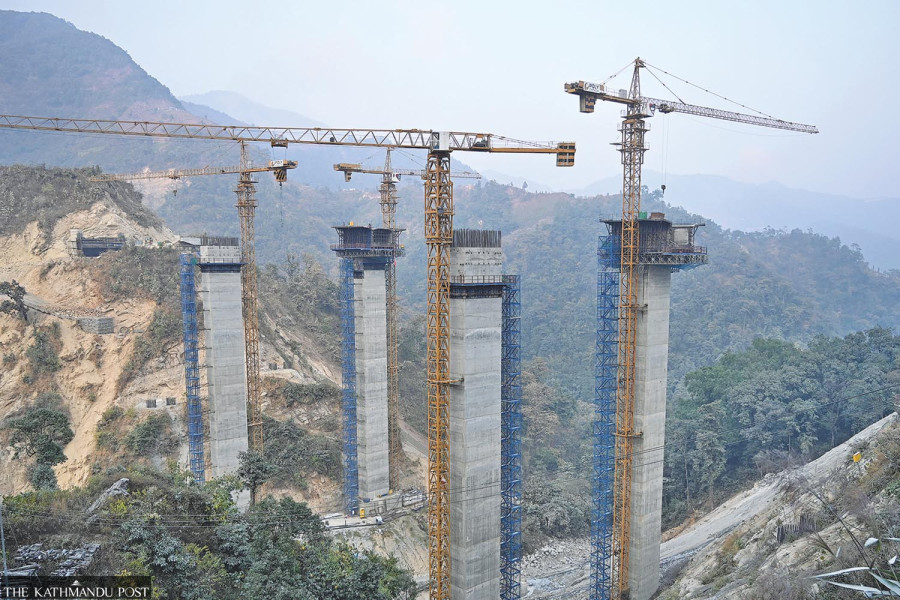Money
ADB dials up Nepal’s economic growth forecast
Multilateral funding agency projects 4.9 percent growth for 2024-25, citing gains in agriculture, tourism, energy.
Post Report
The Asian Development Bank has revised Nepal’s economic growth forecast upward for the current fiscal year beginning mid-July. This is based on projected agricultural and electricity output growth and buoyant tourist arrivals.
The multilateral funding agency said Nepal’s economy might grow by 4.9 percent in the 2024-25 fiscal year, 0.1 percent more than its April forecast.
The growth, however, is way lower compared to the government’s 6 percent target.
In the last fiscal year, Nepal registered 3.9 percent economic growth.
“We have projected that the agriculture sector, particularly paddy production, may perform well backed by good monsoon and availability of chemical fertiliser,” Manbar Singh Khadka, economist at the ADB Resident Mission Nepal, told a press briefing in Kathmandu on Wednesday.
Paddy is transplanted across most of Nepal in June and harvested in October-November.
Paddy is Nepal’s biggest-earning farm commodity, with tens of thousands of farmers relying on its income. According to Khadka, the high output may cool down inflation and pump the economy.
The country has 1.43 million hectares of land suitable for growing paddy. The grain is generally planted twice a year—in June and February. However, spring paddy in February is planted on only 104,712 hectares.
According to Khadka, the growth in tourist arrivals would generate economic activities in the service sector.
“There’s a flurry of new hotels opening. Domestic tourism is also on the rise,” he said, adding that the growth of tourism supports transport, telecom, hotels, restaurants and other services
Khadka said import growth was positive in the first two months of the current fiscal year, and bank credit disbursement had grown as well.
“Public investment in electricity production has increased while the private sector is pouring money into the hospitality industry,” said Khadka. “Due to rising foreign exchange reserves, banks have decreased interest rates.”
On Monday, the International Monetary Fund stated that Nepal’s economy is showing early signs of recovery, suggesting that addressing vulnerabilities among savings and credit cooperatives should remain the country’s priority.
“Gross domestic product growth will pick up on a gradual recovery of domestic demand, acceleration of infrastructure spending, and further revitalisation of tourism and related services,” said Arnaud Cauchois, ADB Country Director for Nepal.
The ADB said that further recovery in domestic demand supported by the cautiously accommodative monetary policy, the planned acceleration of capital budget, wholesale and retail trade, transport and storage, and real estate activities is expected to strengthen.
Domestic demand will be revitalised by an increase in planned infrastructure projects, their accelerated implementation, a cut in the central bank’s policy rate by 50 basis points to 5 percent, further monetary easing, and ongoing finance sector reform.
Consumption will grow as remittances rise and government expenditure expands. Likewise, investment will increase as the implementation of government projects ramps up, pushing up imports substantially.
Although electricity exports to India will rise significantly under a 2024 trade agreement, net exports will drag on growth in 2025, the ADB said. “Higher growth is expected in all production sectors.”
Agriculture will benefit from timely paddy plantation, normal monsoon, and a recently announced minimum support price for paddy, which has removed price uncertainty for farmers.
Industry growth will be supported primarily by increased electricity generation. Construction, which has stalled heretofore, will expand following the rollout by Nepal Rastra Bank, the central bank, of a series of initiatives that extend bank guarantees and loan repayment periods for construction businesses, according to the ADB.
Manufacturing will also gain momentum as interest rates soften, and services will benefit from higher tourist arrivals supported by construction of several five-star hotels and increased bank and financial institutional lending to hotel and tourism related industries.
Nepal Rastra Bank’s target of containing inflation within 5 percent in the current fiscal year seems attainable. The inflation forecast is expected to remain within the central bank’s ceiling, assuming a normal harvest and a modest decline in inflation in India, the major source of Nepal’s imports.
External risks will remain relatively well-contained, the Manila-based bank said. The external position strengthened in the last fiscal year because of the declining trade deficit amid buoyant remittance inflows and increase in tourist arrivals. However, the current account gap will likely turn to a deficit of about 1 percent of the GDP in the current fiscal year from a surplus of 3.9 percent as the economy recovers and the remittance inflows moderate.
There are also risks. The ADB said any intensified geopolitical tensions in the Middle East could hurt Nepal’s remittance income and push up oil and food prices.
“A global economic downturn could affect its tourism receipts. A perennial risk to economic growth in Nepal is high vulnerability to natural disasters and climate shocks.”




 14.72°C Kathmandu
14.72°C Kathmandu














